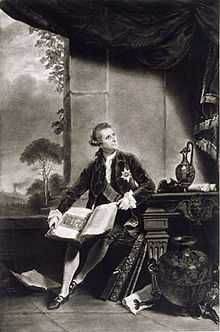1730s in archaeology
| Table of years in archaeology |
|---|
|
| Related time period or subjects |
| Art Archaeology Architecture Literature Music Science more In Template:Year nav topic: extra parameters: science |
The decade of the 1730s in archaeology involved some significant events.
Explorations
Excavations
- Formal excavations continue at Pompeii.
Finds
- 1738: Herculaneum is rediscovered, buried in volcanic ash near Pompeii.

1730: William Hamilton.
Publications
- 1732: John Horsley - Britannia Romana (posthumous).
- 1735: Prospero Alpini - Historiæ Ægypti Naturalis (posthumous).
- 1736: Francis Drake - Eboracum (Roman York)
Other events
- 1731: December 8 - Antiquarian John Freeman buries a 'time capsule' in the grounds of his house at Fawley Court in England.
- 1734: November 12 - Nicholas Mahudel reads a paper to the Académie des inscriptions et belles-lettres on Three Successive Ages of Stone, Bronze, and Iron, introducing the concept of the Stone, Bronze and Iron Ages.[1]
Births
- 1730: September 16 - William Hamilton, Scottish diplomat, antiquarian, archaeologist and volcanologist (died 1803)
- 1732: Luigi Lanzi, Italian archaeologist (died 1810)
- 1735: August 8 - Jérémie Jacques Oberlin, Alsatian archaeologist (died 1806)
Deaths
References
- ↑ Hamy, M. E. T. (March–April 1906). "Matériaux pour servir à l'histoire de l'archéologie préhistorique". Revue archéologique. 4e série 7: 239–259.
| Preceded by 1720s in archaeology |
Archaeology timeline 1730s |
Succeeded by 1740s in archaeology |